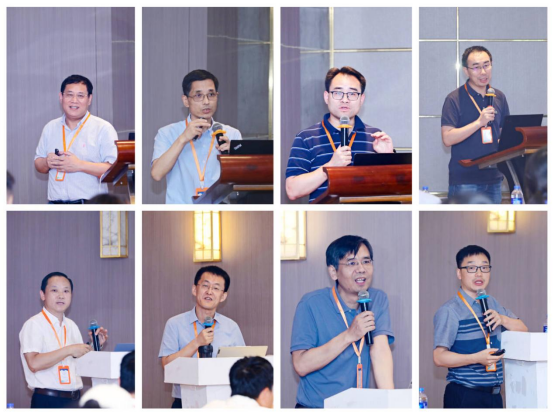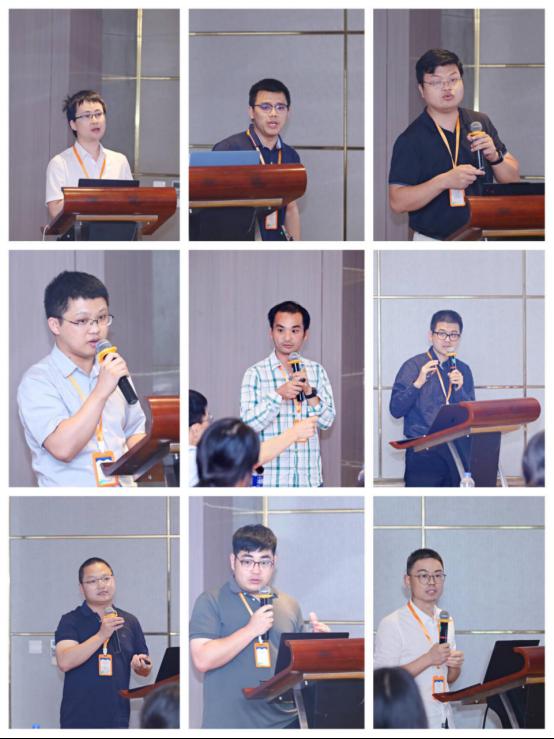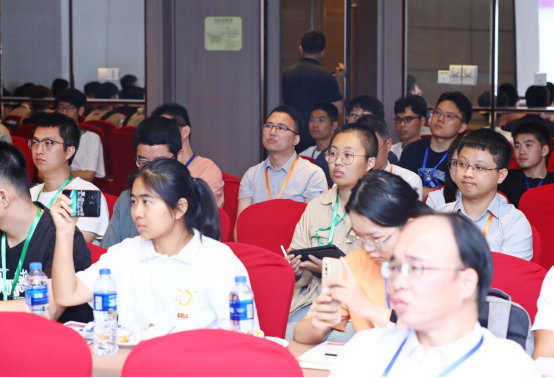The 2024 International Conference on Molecular Simulation (ICMS 2024) was successfully held from August 26 to 27 in Wuhan. The conference was hosted by the Research Development Office of Huazhong University of Science and Technology (HUST), and co-organized by the School of Energy and Power Engineering of HUST and the SCI journal Molecular Simulation. The Wuhan Supercomputing Center and the Wuhan Artificial Intelligence Computing Center also supported the event. The conference, themed "Molecular Simulation in Energy Storage and Catalysis", featured presentations from over 40 renowned scholars from both domestic and international institutions. The conference attracted nearly 170 participants who engaged in discussions and exchanges.

At the opening ceremony, Academician Zhang Suojiang, Chair of the Academic Committee of the conference, Professor of the Institute of Process Engineering, Chinese Academy of Sciences, and President of Henan University, along with Feng Guang, Chair of the Organizing Committee of the conference, Professor from HUST, delivered speeches. They warmly welcomed all the participating experts and scholars and highlighted that the conference focuses on the application of molecular simulation of electrochemical interfaces in energy storage and catalysis, as well as the latest developments in related fields such as artificial intelligence and interdisciplinary sciences.


The conference then proceeded with plenary presentations chaired by Prof. Nick Quirke, the Editor-in-Chief of Molecular Simulation. Prof. Alexei Kornyshev from Imperial College London gave a plenary talk titled "New Turns in the Double Layer Theory," sharing his deep insights and research findings in the fields of electrochemistry, nanoscience, and energy storage. Prof. Kornyshev's work has significant implications for the theoretical construction of double layers. Following his presentation, Prof. Fernando Bresme, also from Imperial College London, delivered an academic report titled "Thermal Transport in Heterogeneous Nanoscale Interfaces." Prof. Bresme's research focuses on the computational and theoretical study of the structure and dynamics of complex interfaces, particularly the mechanisms of lubrication and thermal transport at solid-liquid interfaces. In his presentation, Prof. Bresme introduced the thermal transport behavior at the nanoscale interfaces and demonstrated how molecular simulations are used to quantify energy transfer at these interfaces, which can be applied to the design of high-performance materials for energy management and medical applications.

Following the plenary presentations, the conference transitioned to two parallel sessions. In the session focused on molecular simulation in energy storage, Prof. Liu Jianjun from the Shanghai Institute of Ceramics, Chinese Academy of Sciences, delivered a keynote address titled "Design and Synthesis of Electrochemical Energy Storage Materials Driven by Computation and AI," where he discussed the application of computational and artificial intelligence techniques in the design, experimental synthesis, and characterization of electrochemical energy storage materials. Prof. Chen Shengli from Wuhan University gave a keynote presentation on "Theoretical and Computational Studies on the Transport Behaviors of Lithium Ions in Olivine Phosphate Materials," detailing his research on the theoretical and computational exploration of lithium-ion transport properties in olivine phosphate materials. Prof. Cheng Jun from Xiamen University presented a keynote talk titled "Towards AI² Electrochemistry (AI² = AI × ab initio)," introducing his work on accelerating ab initio electrochemical research through artificial intelligence. Prof. Li Quan from Jilin University gave a keynote presentation titled "Non-hydrostatic Pressure Induced Superconductivity in Diamond and Solid Molecular Hydrogen," highlighting first-principles calculations related to the superconductivity of diamond and solid hydrogen under non-hydrostatic pressure.
Additionally, several invited talks were delivered by prominent researchers, including Associate Research Fellow Chen Xiang and Associate Professor Yu Kuang from Tsinghua University, Associate Research Fellow Wang Yanlei from the Institute of Process Engineering, Chinese Academy of Sciences, Researcher Wu Qisheng from Suzhou Lab, Researcher Gao Guoping from Xi'an Jiaotong University, Prof. Cheng Tao from Soochow University, Prof. Lian Cheng from East China University of Science and Technology, Researcher Liu Zhu from Zhejiang University, and Assistant Professor Xu Kui from Nanjing Tech University. These talks covered a wide range of topics, including the application of artificial intelligence and multi-scale computation in molecular simulation force fields, lithium-ion batteries, and the structure and transport of electric double layers.

In the session focused on molecular simulation in catalysis, Prof. Zhao Yan from Sichuan University delivered a keynote address titled "Development of Quantum Chemical Methods and Their Applications in Research of Energy and Environmental Materials," where he discussed the development of quantum chemical computational methods and their applications in research of energy and environmental materials. Prof. Zhou Zhen from Zhengzhou University presented a keynote talk titled "Understanding Electrocatalysis by Simulations in Realistic Electrochemical Environment," emphasizing the importance of computational simulations in studying electrocatalysis within more realistic electrochemical conditions. Prof. Liu Limin from Beihang University gave a keynote presentation titled "Origin of the Activity for Metal Oxides," highlighting his research on uncovering the activity origins of metal oxides through computational studies. Prof. Xiao Jianping from the Dalian Institute of Chemical Physics, Chinese Academy of Sciences, delivered a keynote address titled "Computation and Data-Driven Design of Electrochemical Ammonia Synthesis," discussing the progress made in electrochemical ammonia synthesis through computational and data-driven approaches.
In addition, invited talks were delivered by prominent researchers, including Prof. Kong Xian from South China University of Technology, Assistant Professor Zheng Shisheng from Xiamen University, Associate Professor Tian Yun and Researcher Zhang Xu from Zhengzhou University, Prof. Yin Wanjian from Soochow University, Researcher Liu Jincheng from Nankai University, Assistant Professor Xu Shenzhen from Peking University, Prof. Zhan Cheng from Nanjing University of Science and Technology, and Researcher Ma Jiale from Songshan Lake Materials Laboratory. These talks covered a broad spectrum of topics, including constant potential calculation methods, solar cells, electrolyte design, and the mechanisms of single-atom catalysis.


The successful hosting of this conference also got the support from professors (Shan Bin, Yang Liming, Liao Rongzhen, et al.) at other departments of HUST, and strengthened international collaboration and academic exchange in the field of molecular simulation, promoting the advancement of related disciplines. Participants gained a profound understanding of the critical role that molecular simulation plays in driving progress across multiple fields, including chemistry, physics, biology, materials science, and engineering.
Written by: Zeng Liang, Sun Tian
Edited by: Chang Wen, Peng Yumeng
